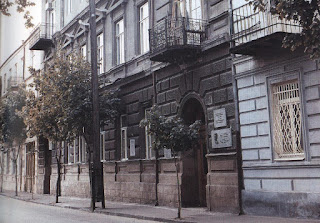"In the camps, first at Tanforan and then at Topaz in Utah, I had the opportunity to study the human race from the cradle to the grave, and to see what happens to people when reduced to one status and one condition. Cameras and photographs were not permitted in the camps, so I recorded everything in sketches, drawings and paintings." Miné Okubo, preface to the 1983 edition of Citizen 13660

Okubu's parents came to the USA from Japan in 1904 to seek a better life, her father a scholar and her mother a calligrapher. They settled in Riverside, California, where Mine' was born, went to school, and studied art. After getting her MA in Art at UC-Berkeley, she earned a scholarship to study art in Europe. The coming war cut her stay short.
When she returned home, she worked for a while as a muralist on Works Progress Administration (WPA) Federal Arts projects. I found that fascinating. I am always, always impressed with the fact that an FDR New Deal program actually hired artists and humanists in every field, of every race, ethnicity, and background, across the country, to document and beautify America. Maybe Biden will consider reviving it.
December 7, 1941, changed the course of Miné Okubo’s life and the lives of the entire Japanese and Japanese-American communities living in the United States. Pressed by the attack on Pearl Harbor, President Roosevelt issued Executive Order 9066 in 1942, which banned people of Japanese descent from living on the West Coast. Okubo and her family, US citizens all, were forced to vacate their home and were separated for relocation.
Okubo and her brother were interned to Tanforan Assembly Center and the Topaz War Relocation Center from 1942 to 1944. There Okubo made over 2,000 drawings and sketches of daily life in the camps, many of which were included in her book. She always had her sketch book with her, including when she was teaching art to the children of the camps. After her release Okubo relocated to New York to continue her career as an artist, earning numerous awards and recognitions.
In 1946 Citizen 13360 came out. It was the first published account of the dreadful and shameful experience of the Japanese Internment Camps. The title of the book refers, of course, to the number the US government assigned her in the camps. Just a number. The dehumanizing anquish of American citizens who lost everything they had and were forced to struggle to survive.
 |
| Okubo, Child, c.1990s. |
 |
| Interesting styles and composition. This piece is at MOMA. |
Some sources:
https://www.womenshistory.org/education-resources/biographies/mine-okubo, for a good biography.
https://www.harpersbazaar.com/culture/features/a35913981/its-time-to-reckon-with-the-history-of-asian-women-in-america/, a fascinating, and painful, history of Asian women in America.
https://www.history.com/topics/world-war-ii/japanese-american-relocation, history of the Japanese-American Internment Camps, considered one of the most heinous violations of American Civil Rights in the 20th century.


















































